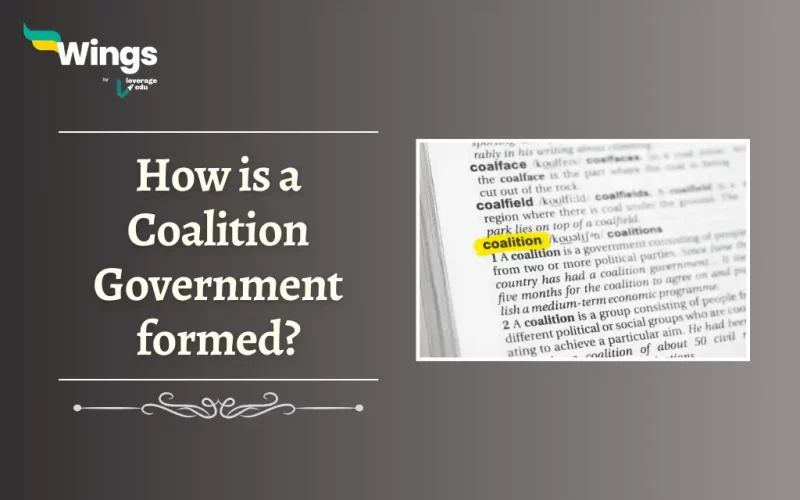A Coalition Government is a mixture of parties that come together in a Parliament or House to form a Government. So, it explains that a Coalition Government is formed when two or more parties win and agree to work together. Furthermore, this collaboration is done to run a nation. It can happen when no single party has achieved an Absolute Majority. Additionally, it means that no party got more than 50% of the seats on their own. India has seen so many Coalition governments, the most common coalition governments formed in India are the National Democratic Alliance (NDA) and Akhil Bharatiya Vidyarthi Parishad (ABVP).
Also Read: What is 7th Schedule of Indian Constitution?
What is the Meaning of Coalition Government?
Table of Contents [show]
A Coalition government is a ruling or opposition government, made jointly by different parties who have not backed the Absolute majority of the Parliament or house. Moreover, these Coalition governments can prove to be of great benefit. Since different parties of different ideologies come together, a coalition gives the following a chance.
- Covers different representations.
- Increase negotiations.
- Encourage conflict resolution through compromise.
Also Read: What is the Difference between National Party and State Party?
What are the Advantages and Disadvantages of Coalition Government?
Furthermore, a Coalition Government comes with its own set of Advantages and Disadvantages. To know in detail, scroll through.
| Advantages of Coalition Government | Disadvantages of Coalition Government |
| More consensus-based politics | Tendency to be fractious and prone to disharmony |
| Reflects popular opinion better | Component parties may not always agree on policy |
| Requires compromise, leading to broader perspectives | Potential for slower decision-making |
| Offers representation to diverse ideologies | Challenges in maintaining stability |
| Encourages negotiation and compromise | Can face challenges in implementing bold reforms |
| Fosters cooperation among different parties | Risk of internal conflicts affecting governance |
| Prevents dominance of a single-party | Possibility of coalition collapse leading to instability |
Coalition Government vs Majority Government
The key differences between a Coalition Government and a Majority Government in India are:
| Characteristic | Coalition Government | Majority Government |
|---|---|---|
| Composition | Formed by two or more political parties coming together to form the government. | Formed by a single political party that has secured an absolute majority on its own. |
| Stability | Less stable as it requires constant negotiation and compromise between the coalition partners. | More stable as the single party has a clear majority to implement its agenda. |
| Policy-making | Policies are the result of negotiations and compromises between the coalition partners. | Policies are primarily driven by the agenda of the single ruling party. |
| Duration | Coalition governments in India have tended to be shorter in duration, usually lasting only a few years. | Majority governments in India have generally lasted the full 5-year term. |
| Examples | United Front (1996-1998), National Democratic Alliance (1998-2004, 2014-present), United Progressive Alliance (2004-2014) | Broader representation, checks and balances, and political stability in times of crisis |
| Advantages | Broader representation, checks and balances, and political stability in times of crisis. | Decisive policymaking, clear political mandate, administrative efficiency. |
| Disadvantages | Frequent political instability, policy paralysis, difficulty in decision-making. | Concentration of power, lack of opposition voice, potential for abuse of power. |
Related Blogs
Lastly, we hope you liked our blog and gained an understanding of how is Coalition government formed. Moreover, you may even read more blogs and empower yourself with knowledge regarding Civics and Polity!
 One app for all your study abroad needs
One app for all your study abroad needs















 45,000+ students trusted us with their dreams. Take the first step today!
45,000+ students trusted us with their dreams. Take the first step today!
